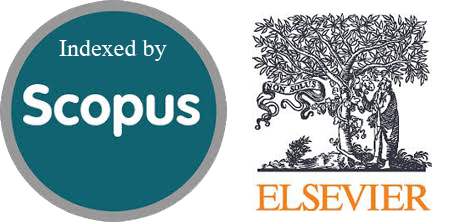Stunting Prediction Modeling in Toddlers Using a Machine Learning Approach and Model Implementation for Mobile Application
Abstract
Children’s health and development are critical for maintaining national productivity and independence, with stunting being a major concern. Stunting, a form of malnutrition, impairs growth and development, affecting millions of people globally, including a significant number in Indonesia. This study addresses the challenge of stunting by developing a predictive model using machine learning techniques to forecast stunting risks based on public health data. The literature review section discusses the factors that influence stunting, and these factors are used as features to build a stunting prediction model. Then the features were used to build a model with three machine learning algorithms Extreme Gradient Boosting (XGBoost), Random Forest, and K-Nearest Neighbor (KNN) to build and evaluate models that predict stunting. The models were trained and assessed using public datasets and the most effective algorithm was integrated into a mobile application for practical use. The results indicate that the XGBoost model outperforms the other models with an accuracy of 85%, making it the optimal choice for implementation in a mobile application. The next-best model is selected to be implemented through a mobile application so that users can directly use the model that has been built. This application aims to enhance early detection and intervention efforts for stunting, potentially improving child health outcomes and contributing to long-term productivity by building predictive models and implementing the models into a mobile application. This study contributes to the implementation of models built using public data for application in mobile applications.
Downloads
References
S. Mulatu, A. Gedif, F. Tadesse, W. Zemene, M. Berhanu, and H. M. Workie, “A high prevalence of stunting was observed among under-five children: A community-based cross-sectional study,” Clin Nutr ESPEN, vol. 66, pp. 343–351, Apr. 2025, doi: 10.1016/j.clnesp.2025.01.060.
Eko, “149 Juta Anak di Dunia Alami Stunting Sebanyak 6,3 Juta di Indonesia, Wapres Minta Keluarga Prioritaskan Kebutuhan Gizi,” Direktoran Pendidikan Anak Usia Dini. Accessed: Feb. 26, 2025. [Online]. Available: https://paudpedia.kemdikbud.go.id/berita/149-juta-anak-di-dunia-alami-stunting-sebanyak-63-juta-di-indonesia-wapres-minta-keluarga-prioritaskan-kebutuhan-gizi?do=MTY2NC01YjRhOGZkNA==&ix=MTEtYmJkNjQ3YzA=
J. Fauziah, K. D. Trisnawati, K. P. S. Rini, and S. U. Putri, “Stunting: Penyebab, Gejala, dan Pencegahan,” Jurnal Parenting dan Anak, vol. 1, no. 2, p. 11, Dec. 2023, doi: 10.47134/jpa.v1i2.220.
N. Purwati and G. B. Sulistyo, “Stunting Early Warning Application Using KNN Machine Learning Method,” Jurnal Riset Informatika, vol. 5, no. 3, pp. 373–378, Jun. 2023, doi: 10.34288/jri.v5i3.550.
F. H. Bitew, C. S. Sparks, and S. H. Nyarko, “Machine learning algorithms for predicting undernutrition among under-five children in Ethiopia,” Public Health Nutr, vol. 25, no. 2, pp. 269–280, Feb. 2022, doi: 10.1017/S1368980021004262.
M. M. Kumbure, C. Lohrmann, P. Luukka, and J. Porras, “Machine learning techniques and data for stock market forecasting: A literature review,” Expert Syst Appl, vol. 197, p. 116659, Jul. 2022, doi: 10.1016/j.eswa.2022.116659.
A. Michalke, “Prediction and Predictability Survey on the State of Knowledge about Foundations of Prediction and Limits of Predictability,” 2022. [Online]. Available: www.ostfalia.de/pws/michalke
D. I. Yani, L. Rahayuwati, C. W. M. Sari, M. Komariah, and S. R. Fauziah, “Family Household Characteristics and Stunting: An Update Scoping Review,” Jan. 01, 2023, MDPI. doi: 10.3390/nu15010233.
Y. Susanti and D. Yanuar Agus Santoso, “Overview of Family Characteristics of Stunting Toddlers,” 2020. [Online]. Available: http://jurnal.globalhealthsciencegroup.com/index.php/PICNHS
N. N. Hasanah and A. S. Purnomo, “Implementasi Data Mining Untuk Pengelompokan Buku Menggunakan Algoritma K-Means Clustering (Studi Kasus : Perpustakaan Politeknik LPP Yogyakarta),” Jurnal Teknologi Dan Sistem Informasi Bisnis, vol. 4, no. 2, pp. 300–311, Jul. 2022, doi: 10.47233/jteksis.v4i2.499.
S. Ardabili et al., “COVID-19 Outbreak Prediction with Machine Learning,” Algorithms, vol. 13, no. 10, p. 249, Oct. 2020, doi: 10.3390/a13100249.
R. R. Hallan and I. N. Fajri, “Prediksi Harga Rumah menggunakan Machine Learning Algoritma Regresi Linier,” Jurnal Teknologi Dan Sistem Informasi Bisnis, vol. 7, no. 1, pp. 57–62, Jan. 2025, doi: 10.47233/jteksis.v7i1.1732.
Ž. Vujović, “Classification Model Evaluation Metrics,” International Journal of Advanced Computer Science and Applications, vol. 12, no. 6, pp. 599–606, 2021, doi: 10.14569/IJACSA.2021.0120670.
R. Eliviani and Y. Bandung, “WSN-IoT Forecast: Wireless Sensor Network Throughput Prediction Framework in Multimedia Internet of Things,” Journal of ICT Research and Applications, vol. 17, no. 3, pp. 336–355, Dec. 2023, doi: 10.5614/itbj.ict.res.appl.2023.17.3.4.
D. Müller, I. Soto-Rey, and F. Kramer, “Towards a guideline for evaluation metrics in medical image segmentation,” Dec. 01, 2022, BioMed Central Ltd. doi: 10.1186/s13104-022-06096-y.
S. A. Hicks et al., “On evaluation metrics for medical applications of artificial intelligence,” Sci Rep, vol. 12, no. 1, Dec. 2022, doi: 10.1038/s41598-022-09954-8.
D. Park and S. Kim, “Probabilistic Precision and Recall Towards Reliable Evaluation of Generative Models,” in Proceedings of the IEEE International Conference on Computer Vision, Institute of Electrical and Electronics Engineers Inc., 2023, pp. 20042–20052. doi: 10.1109/ICCV51070.2023.01839.
C. Chen, X. Xu, X. Ma, L. Yang, G. Wang, and X. Ye, “Comprehensive performance evaluation of intrusion detection model based on radar chart method,” in Proceedings - 2022 2nd International Conference on Electronic Information Engineering and Computer Technology, EIECT 2022, Institute of Electrical and Electronics Engineers Inc., 2022, pp. 44–47. doi: 10.1109/EIECT58010.2022.00014.
H. Shen, H. Zhao, and Y. Jiang, “Machine Learning Algorithms for Predicting Stunting among Under-Five Children in Papua New Guinea,” Children, vol. 10, no. 10, Oct. 2023, doi: 10.3390/children10101638.
N. Purwati and G. B. Sulistyo, “Stunting Early Warning Application Using KNN Machine Learning Method,” Jurnal Riset Informatika, vol. 5, no. 3, pp. 373–378, Jun. 2023, doi: 10.34288/jri.v5i3.550.
D. Tarwidi, S. R. Pudjaprasetya, D. Adytia, and M. Apri, “An optimized XGBoost-based machine learning method for predicting wave run-up on a sloping beach,” in Proceedings of the ACM SIGKDD International Conference on Knowledge Discovery and Data Mining, Association for Computing Machinery, Mar. 2023, pp. 785–794. doi: 10.1145/2939672.2939785.
Copyright (c) 2025 Jurnal RESTI (Rekayasa Sistem dan Teknologi Informasi)

This work is licensed under a Creative Commons Attribution 4.0 International License.
Copyright in each article belongs to the author
- The author acknowledges that the RESTI Journal (System Engineering and Information Technology) is the first publisher to publish with a license Creative Commons Attribution 4.0 International License.
- Authors can enter writing separately, arrange the non-exclusive distribution of manuscripts that have been published in this journal into other versions (eg sent to the author's institutional repository, publication in a book, etc.), by acknowledging that the manuscript has been published for the first time in the RESTI (Rekayasa Sistem dan Teknologi Informasi) journal ;







